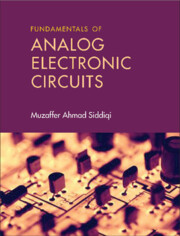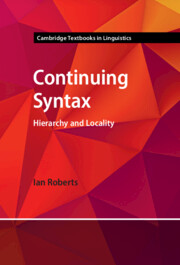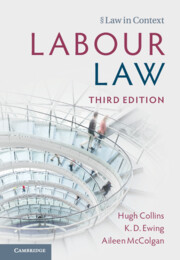Refine search
Actions for selected content:
37556 results in Cambridge Textbooks
Copyright page
-
- Book:
- Evolutionary Psychology
- Published online:
- 30 October 2025
- Print publication:
- 09 October 2025, pp iv-iv
-
- Chapter
- Export citation
Glossary
-
- Book:
- Evolutionary Psychology
- Published online:
- 30 October 2025
- Print publication:
- 09 October 2025, pp 434-444
-
- Chapter
- Export citation
Reviews
-
- Book:
- Evolutionary Psychology
- Published online:
- 30 October 2025
- Print publication:
- 09 October 2025, pp ii-ii
-
- Chapter
- Export citation

Fundamentals of Analog Electronic Circuits
-
- Published online:
- 08 October 2025
- Print publication:
- 30 November 2025
-
- Textbook
- Export citation

Learning to Teach in a New Era
-
- Published online:
- 04 October 2025
- Print publication:
- 25 September 2025
-
- Textbook
- Export citation

Reflections on English Word-Formation
-
- Published online:
- 03 October 2025
- Print publication:
- 07 August 2025
-
- Textbook
- Export citation

Continuing Syntax
- Hierarchy and Locality
-
- Published online:
- 03 October 2025
- Print publication:
- 25 September 2025
-
- Textbook
- Export citation

Labour Law
-
- Published online:
- 02 October 2025
- Print publication:
- 20 November 2025
-
- Textbook
- Export citation

An Economic History of Europe
- Knowledge, Institutions and Welfare, Prehistory to the Present
-
- Published online:
- 02 October 2025
- Print publication:
- 02 October 2025
-
- Textbook
- Export citation

Engineering Physics
- Fundamentals and Applications
-
- Published online:
- 02 October 2025
- Print publication:
- 30 November 2025
-
- Textbook
- Export citation
Tables
-
- Book:
- An Economic History of Europe
- Published online:
- 02 October 2025
- Print publication:
- 02 October 2025, pp ix-ix
-
- Chapter
- Export citation
7 - Money, Credit and Banking
-
- Book:
- An Economic History of Europe
- Published online:
- 02 October 2025
- Print publication:
- 02 October 2025, pp 155-177
-
- Chapter
- Export citation
15 - Complex Modifying Forms
- from Part III - Expanding Features
-
- Book:
- How to Create a Language
- Published online:
- 23 October 2025
- Print publication:
- 02 October 2025, pp 330-358
-
- Chapter
- Export citation
Boxes
-
- Book:
- An Economic History of Europe
- Published online:
- 02 October 2025
- Print publication:
- 02 October 2025, pp xiii-xiv
-
- Chapter
- Export citation
Preface to the Second Edition
-
- Book:
- An Economic History of Europe
- Published online:
- 02 October 2025
- Print publication:
- 02 October 2025, pp xvii-xviii
-
- Chapter
- Export citation
Glossary
-
- Book:
- An Economic History of Europe
- Published online:
- 02 October 2025
- Print publication:
- 02 October 2025, pp 290-299
-
- Chapter
- Export citation
2 - Europe from Obscurity to Economic Recovery
-
- Book:
- An Economic History of Europe
- Published online:
- 02 October 2025
- Print publication:
- 02 October 2025, pp 39-63
-
- Chapter
- Export citation
Conclusion and Epilogue
-
- Book:
- An Economic History of Europe
- Published online:
- 02 October 2025
- Print publication:
- 02 October 2025, pp 275-287
-
- Chapter
- Export citation
1 - The Making of Europe
-
- Book:
- An Economic History of Europe
- Published online:
- 02 October 2025
- Print publication:
- 02 October 2025, pp 15-38
-
- Chapter
- Export citation
10 - What Governments (Should) Do
-
- Book:
- An Economic History of Europe
- Published online:
- 02 October 2025
- Print publication:
- 02 October 2025, pp 230-253
-
- Chapter
- Export citation
